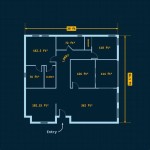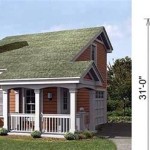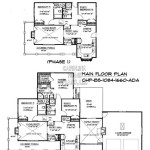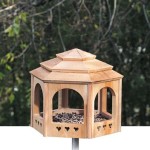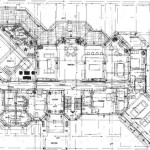Why Are Small Planes Flying Over My House?
The persistent hum or drone of a small plane overhead can be a source of curiosity, annoyance, or even concern for homeowners. Understanding the reasons behind this aerial activity requires considering a range of factors, including the location of the property, the type of aircraft involved, and the prevailing regulations governing airspace use. This article will explore the common explanations for why small planes might be frequently traversing a particular residential area.
Proximity to an airport or airfield is the most common reason for increased aircraft traffic. Even small, general aviation airports generate significant local air traffic. These airports cater to private pilots, flight schools, charter services, and other smaller aircraft operations. The flight paths associated with takeoffs and landings often concentrate aircraft activity over specific areas surrounding the airport. These are known as approach and departure corridors. Homes located directly beneath or near these corridors will experience significantly more overflights than properties situated further away. The frequency will depend on airport activity levels, which fluctuate based on the season, weather conditions, and time of day.
Furthermore, even if a major commercial airport is not nearby, smaller private airfields or crop dusting strips can contribute to low-altitude flights. These operations may be less regulated, leading to more varied and unpredictable flight patterns. Identifying the nearest airport, airfield, or even agricultural airstrip is a crucial first step in understanding the source of the overflights.
Weather conditions play a significant role in determining flight paths. Pilots often adjust their routes to avoid adverse weather such as turbulence, strong winds, or icing conditions. In certain weather scenarios, planes might be forced to fly lower than usual or to use specific approach patterns that funnel them over a particular area. Wind direction, in particular, significantly impacts runway use, and consequently, the areas over which aircraft fly during takeoffs and landings. Also, cloud cover can necessitate lower altitudes in order to maintain visual flight rules (VFR), where pilots rely on visual references for navigation.
Pilots are trained to adhere to established flight procedures and regulations to ensure safety and minimize noise impact. These procedures often dictate specific routes and altitudes, particularly near airports. Air traffic control (ATC) manages airspace and directs aircraft to maintain separation and avoid collisions. While ATC strives to minimize disturbances to residential areas, safety remains the paramount concern. Therefore, flight paths are designed based on safety considerations, air traffic volume, and airport infrastructure limitations. Navigational aids and instrument landing systems (ILS) further contribute to the standardization of flight paths, potentially concentrating air traffic over specific locales.
Flight Training Activities
Flight training is a common activity that can contribute to increased small plane traffic over certain areas. Flight schools often operate from smaller airports and airfields, conducting numerous training flights daily. These flights involve repetitive maneuvers such as takeoffs, landings, touch-and-go exercises, and simulated emergencies. Training flights frequently involve lower altitudes and more frequent passes over the same area compared to regular passenger or cargo flights. The specific flight paths used for training purposes are often dictated by the local geography, air traffic control instructions, and the training curriculum. The density of flight schools in a region directly correlates with the frequency of training flights experienced by residents.
Students learning to fly must practice specific maneuvers repeatedly to achieve proficiency. This includes practicing approaches and landings from various directions, which may result in multiple passes over the same residential area. Stalls, slow flight, and other training exercises also require lower altitudes and focused attention on specific areas. These activities, while essential for pilot training, can contribute to increased noise levels and disturbances for residents living near flight training areas. It's important to remember that these are usually only temporary and the activities are essential for maintaining a safe aviation environment.
Flight schools are generally regulated by aviation authorities and are expected to adhere to noise abatement procedures whenever possible. These procedures may include preferred flight paths, altitude restrictions, and limitations on operating hours. However, the primary responsibility of flight schools is to provide comprehensive training to their students while maintaining safety standards. Therefore, some level of disturbance may be unavoidable for residents living near flight training areas.
Aerial Surveying and Mapping
Many small planes flying at relatively low altitudes are engaged in aerial surveying and mapping activities. These operations utilize specialized equipment to collect data for various purposes, including infrastructure inspection, environmental monitoring, agricultural assessment, and urban planning. Aerial surveying typically involves flying pre-determined routes, often in a grid pattern, to ensure complete coverage of the area of interest. The altitude at which these flights occur depends on the type of data being collected and the equipment used, but it is often lower than that of typical passenger flights. The equipment used includes high-resolution cameras, LiDAR (Light Detection and Ranging) sensors, and other specialized instruments.
Infrastructure inspection is a common application of aerial surveying. This involves using aerial imagery to assess the condition of power lines, pipelines, bridges, and other critical infrastructure components. Early detection of potential issues that are not detectable from ground level help to prevent failures and improve safety. The flights used for these inspections are generally systematic and repetitive.
Mapping and environmental monitoring also involve aerial surveys. Mapping can be used to create or update topographic maps, assess land use changes, and support urban planning initiatives. Environmental monitoring can involve assessing forest health, monitoring water quality, and detecting pollution sources. These operations often occur over large areas and may involve multiple flights over the same region. The frequency and duration of these flights depend on the size of the area being surveyed and the specific objectives of the project.
Agricultural assessment is another important application of aerial surveying. Farmers and agricultural companies may use it to monitor crop health, assess irrigation effectiveness, and detect pest infestations. This data can inform decisions about fertilizer application, irrigation scheduling, and pest control strategies, ultimately improving crop yields and resource management. Many times these flights happen right before or after harvest season.
Recreational Flying and Private Aviation
Recreational flying and private aviation contribute to small plane traffic in many areas. Private pilots often fly for leisure, sightseeing, or transportation. These flights are typically less predictable than commercial flights in terms of routes and schedules. Private pilots have greater flexibility in choosing their flight paths and altitudes, as long as they comply with air traffic regulations. This flexibility can sometimes lead to flights over residential areas that might not be traversed by commercial aircraft. Recreational pilots often fly over scenic areas or landmarks, which may coincide with populated areas. Scenic flights allow pilots and passengers to enjoy aerial views of the landscape and local attractions.
Private pilots might also use their aircraft for personal transportation, commuting to work, visiting friends and family, or attending business meetings. This is especially common in remote areas or regions with limited ground transportation options. The frequency of these flights depends on the individual pilot's needs and preferences. Some pilots might fly regularly, while others might only fly occasionally. The types of aircraft used in private aviation vary widely, ranging from small single-engine planes to larger, more sophisticated aircraft.
Airspace regulations and pilot training play a crucial role in ensuring the safety of recreational flying and private aviation. Pilots are required to undergo extensive training and obtain licenses to operate aircraft. They must also adhere to air traffic regulations, including altitude restrictions, speed limits, and communication procedures. Air traffic control provides guidance and support to private pilots, helping them to navigate safely and avoid conflicts with other aircraft. Even with these regulations, recreational flying provides a sense of freedom and accessibility for pilots, and allows for a variety of aviation experiences.

What Plane Just Flew Over My House Here S An Easy Way To Find Out

What Plane Just Flew Over My House Here S An Easy Way To Find Out

It Seems Like Planes Are Flying Lower And Louder In South Manchester Evening News
What It S Like To Live In Neighborhood Designed For Pilots Business Insider

What Plane Just Flew Over My House Here S An Easy Way To Find Out

What Plane Just Flew Over My House Here S An Easy Way To Find Out

Alarm Bells Should Be Ringing Over Light Aircraft Noise Pollution Aviation Environment Federationaviation Federation

Why Do Low Flying Aircraft Chart Areas At Night Aviation Stack Exchange

Can You Fly A Drone Over Private Property State By Guide 2025 Jouav

Inside 7 Luxury Homes With Private Airstrips And Jet Hangars
Related Posts

